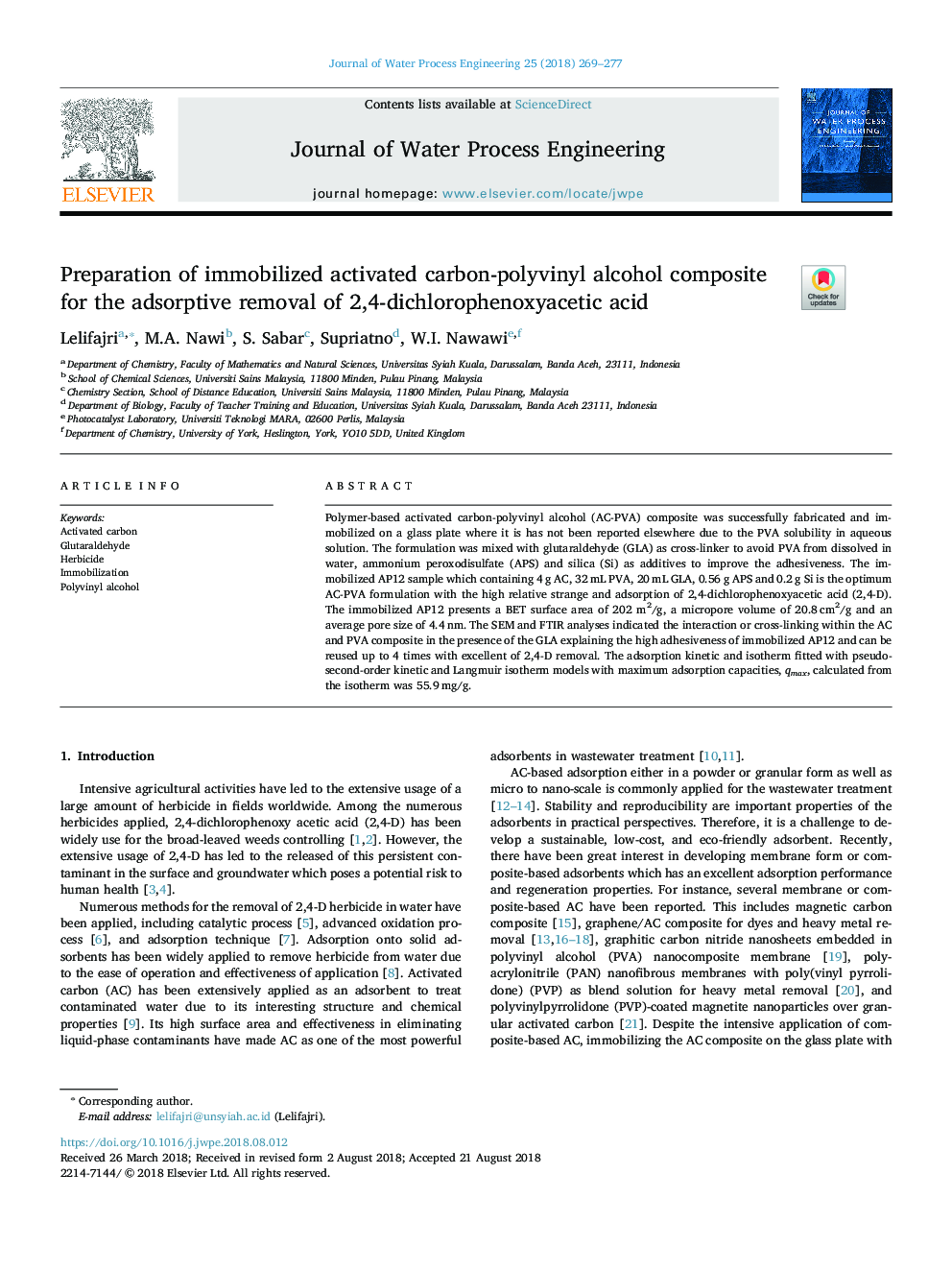| Article ID | Journal | Published Year | Pages | File Type |
|---|---|---|---|---|
| 11000707 | Journal of Water Process Engineering | 2018 | 9 Pages |
Abstract
Polymer-based activated carbon-polyvinyl alcohol (AC-PVA) composite was successfully fabricated and immobilized on a glass plate where it is has not been reported elsewhere due to the PVA solubility in aqueous solution. The formulation was mixed with glutaraldehyde (GLA) as cross-linker to avoid PVA from dissolved in water, ammonium peroxodisulfate (APS) and silica (Si) as additives to improve the adhesiveness. The immobilized AP12 sample which containing 4âg AC, 32âmL PVA, 20âmL GLA, 0.56âg APS and 0.2âg Si is the optimum AC-PVA formulation with the high relative strange and adsorption of 2,4-dichlorophenoxyacetic acid (2,4-D). The immobilized AP12 presents a BET surface area of 202 m2/g, a micropore volume of 20.8âcm2/g and an average pore size of 4.4ânm. The SEM and FTIR analyses indicated the interaction or cross-linking within the AC and PVA composite in the presence of the GLA explaining the high adhesiveness of immobilized AP12 and can be reused up to 4 times with excellent of 2,4-D removal. The adsorption kinetic and isotherm fitted with pseudo-second-order kinetic and Langmuir isotherm models with maximum adsorption capacities, qmax, calculated from the isotherm was 55.9âmg/g.
Related Topics
Physical Sciences and Engineering
Chemical Engineering
Chemical Engineering (General)
Authors
Lelifajri Lelifajri, M.A. Nawi, S. Sabar, Supriatno Supriatno, W.I. Nawawi,
